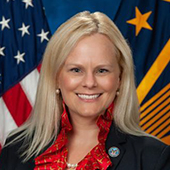Speakers
5 speakers
Date & Time
May 26, 2022 2:00 p.m. ET
Webinar
Date: On demand
Duration: 1 hour
Cost: No Fee
Since it surfaced in the 1990s, the federal service-to-the-citizen movement has continuously evolved. New technologies keep making new services possible and, as in the private sector, moving the expectations of customers and constituents.
Customer experience has emerged as the latest iteration. Embodied in the current President’s Management Agenda, customer experience (CX) embodies all of the ways in which a constituent might interact with a federal agency. An earlier concentration on web transactions has expanded into omni-channel thinking. Constituents want reach agencies in person, on the telephone, by email or live chat, or digitally. This means systems and processes must share backend access to data connected to an individual, for example a taxpayer. Or to a transaction, the tax return itself.
“It is this that seamless experience of interacting through tax administration, that is really taxpayer experience for us,” said Kenneth Corbin, the chief taxpayer experience officer at the IRS. He spoke as part of a Federal News Network panel entitled, Better Customer Experience Builds Trust in Government. Corbin added, “That seamless experience is being able to choose how you interact with the Internal Revenue Service, whether you interact in person, whether you call us on toll free and talk with one of our customer service representatives, or of course, interact with us digitally online through irs.gov.”
Maintaining the trust of the nine million veterans it serves is foundational to CX work at the Veterans Affairs Department. Barbara Morton, the VA’s deputy chief veterans experience officer, detailed “three core elements that we have tried to focus on and hardwire into our business operations.” They start with a customer journey approach to veterans’ interactions, and add measurements of effectiveness of those iterations. “And thirdly,” Morton said, “and most importantly, perhaps, they must be emotionally resonant for the veteran. There must be empathy in everything we do, in every interaction we have.”
It might sound surprising coming from the Office of Management and Budget, but officials there consider empathy an important CX element across the government.
“I always say we have to lead with empathy,” said Andy Lewandowski, the digital experience advisor to the federal chief information officer. “The basic purpose of customer experience delivery, and of human centered design, is to put ourselves in our customers’ shoes.”
Steven Boberski, the senior business development executive for the puvlic sector at Genesys, said that cybersecurity is an important CX consideration, given the sensitive and personally identifiable data that agencies deal with. He recommended use of FedRAMP-approved vendors in the chain of technology for public-facing services.
Boberski said that while mapping the customer’s journey is critical, it’s also critical to retain and consolidate data from each step of a given customer’s encounter.
“To provide empathy from the federal perspective,” Boberski said, means “knowing exactly where that citizen has been in their journey with the agency.” For example, the agency should be able to say, “We can see from the data that you’ve called in multiple times. You’ve tried an email. We have a record of where you’ve been, perhaps we can see that you’ve tried to file your taxes, or you’ve tried to renew something or create a new claim.”
“Knowing where they’ve been in a customer journey is very important,” Boberski added.
Given the challenges of great CX, agencies must take care to integrate the data sources and applications they have and bend them towards CX.
“If we were to design a federal service or agency from scratch, the technologists would probably start by implementing a single customer relationship management system,” Lewandoski said. “That is not the reality in most of our federal agencies and programs today.”
He added, “So the challenge that agencies have from a technology standpoint, is to make sure that those systems are talking to each other.” And that information is stored securely yet available to shared programs.
“And,” Lewandowski said, “that those systems are fundamentally mapping themselves in the backstage, as I like to say, to the front stage experience that customers have when they interact with government.”
Learning objectives:
- Defining Customer Experience from an Agency Perspective
- Relevant Tools for Enhancing Customer Experience
- Customer Experience with Secure Interactions
This program is sponsored by 
Speakers

Barbara Morton
Deputy Chief Veterans Experience Officer, Department of Veterans Affairs

Andy Lewandowski
Digital Experience Advisor to the Federal CIO, Office of Management and Budget

Ken Corbin
Chief Taxpayer Experience Officer, Internal Revenue Service

Steven Boberski
Senior Business Development Executive, Public Sector, Genesys

Tom Temin
Host, The Federal Drive, Federal News Network
Please register using the form on this page.
Have questions or need help? Visit our Q&A page for answers to common questions or to reach a member of our team.
